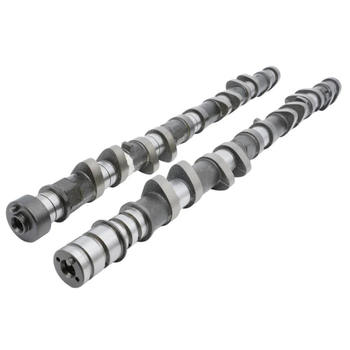First Section: The Function of Engine Crankshafts
To be honest, the engine crankshaft is an often overlooked component in your vehicle's engine. However, it plays a crucial role in converting linear motion into rotational motion, which ultimately powers your car. Frankly speaking, without a properly functioning crankshaft, your engine wouldn't run at all.
Subsection 1: How Does a Crankshaft Work?
In my experience, understanding how a crankshaft works can help you appreciate its importance. The crankshaft is connected to the engine's pistons via connecting rods. As the pistons move up and down in their cylinders, they push on the connecting rods, causing the crankshaft to rotate. This rotation drives the vehicle's transmission and ultimately turns the wheels.
Second Section: Common Issues with Engine Crankshafts
While engine crankshafts are built to last, they can experience wear and tear over time. Here are some common issues you might encounter:
Subsection 2: Crankshaft Damage
Third Section: Engine Crankshaft Repair and Replacement
If you suspect an issue with your engine crankshaft, it's essential to address it promptly to prevent further damage. Depending on the severity of the problem, you may need to consider repair or replacement options.
Subsection 3: Crankshaft Repair
In some cases, minor damage to the crankshaft can be repaired without needing a complete replacement. This might involve machining the crankshaft to restore its proper dimensions or replacing worn bearings. However, it's important to consult with a qualified mechanic to determine if repair is a viable option.
Subsection 4: Crankshaft Replacement
When the damage to the crankshaft is too extensive to repair, a replacement becomes necessary. Engine crankshaft replacement is a complex and time-consuming process, so it's crucial to work with an experienced professional. Interestingly enough, some mechanics recommend replacing other related components, such as the piston rings and main bearings, at the same time to ensure optimal engine performance.
Fourth Section: Preventive Maintenance for Engine Crankshafts
Regular maintenance is absolutely necessary to keep your engine crankshaft in good working condition and prevent premature wear. Here are some tips to help maintain your crankshaft:
Subsection 5: Regular Oil Changes
- Clean engine oil provides essential lubrication for the crankshaft and its bearings, reducing wear and tear.
- Follow your vehicle manufacturer's recommended oil change intervals to ensure proper lubrication.
Subsection 6: Engine Tune-Ups
- Regular engine tune-ups can help identify potential issues before they become serious problems.
- During a tune-up, your mechanic will check the crankshaft's condition and address any concerns.
Subsection 7: Proper Vehicle Usage
- Avoid excessive engine RPMs and heavy loads, as these can put undue stress on the crankshaft.
- Allow your engine to warm up before driving, especially in cold weather.




